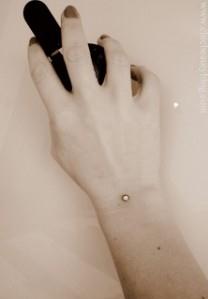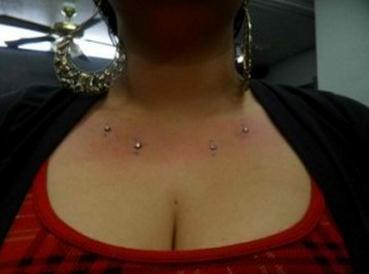Intermittent Claudication
Definition of Intermittent Claudication
Intermittent claudication is a medical term which is associated with peripheral arterial disease (PAD) or peripheral vascular disease (PVD). It is a derived from the Latin word claudicatio intermittens, which means “to limp.”
A person who is inflicted with intermittent claudication does not necessary limp, but when the individual walks or climbs the stairs, the pain occurs, causing limping.
Intermittent claudication, which medically means achiness, heaviness, numbness, cramping, or intermittent pain, involves pain located in the legs which occur during day-to-day activities like climbing stairs or walking.
It is evidently felt in the buttocks, thighs, calves, and feet. It may also be diffuse or localized, affecting one or both legs. It is commonly reported mostly in men.

Intermittent claudication image
Image source: jeffersonhospital.org
Intermittent Claudication Symptoms and Signs
People who have intermittent claudication report the following symptoms and signs:
- Cramping
- Aching
- Muscular fatigue in the legs or buttocks
- Pain relief after resting
Some people experience the symptoms upon engaging in strenuous activities, while others experience such symptoms upon walking a few meters.
The primary indication of intermittent claudication would be pain after walking or during activities and then absence of pain after resting.
Intermittent Claudication Causes
The primary cause of intermittent claudication is due to peripheral arterial disease (PAD). A person develops PAD due to plaque, particularly cholesterol and fat, which adheres to the arterial walls that supply blood to the lower limb muscles.
When there is plaque, it will restrict or block the blood flow. When a person is undergoing activity, the muscles need oxygen and more blood to properly function without pain. However, in the case of intermittent claudication, the arteries become blocked or restricted by the presence of plaque, leading to a blood deficiency in the muscles. The decreased oxygen will eventually lead to numbness, cramping , and pain.
People who are at a high risk of developing intermittent claudication are those who have the following:
- A medical history of diabetes
- Smoking history
- Medical history of high levels of bad cholesterol
- Medical diagnosis of hypertension
- Lack of physical activity
- Arterial disease due to genetics
- High homocysteine level
Diagnosis of Intermittent Claudication
There are three common types of intermittent claudication, namely:
Jaw claudication
People who are diagnosed with this type of intermittent claudication experience pain in the ear or jaw while chewing. The primary reason for its occurrence is due to arterial insufficiency caused by giant cell arteritis.
Neurogenic or spinal claudication
When a person has this kind of diagnosis, he or she has nerve root stenosis or compression of the canal of the spine due to the following factors: herniated disc or fragments of the herniated disc, bulging disc, ostophytes, and scar tissues resulting from a previous surgical procedure. It may either be bilateral or unilateral.
Intermittent vascular or arterial claudication
Intermittent vascular or arterial claudication, which is a medical term, may cause cramp-like pains located in the leg muscles or buttocks. It is primarily due to poor blood circulation in the affected area that may be caused by atherosclerotic blockage or a disease condition like diabetes, a condition that is often undiagnosed.
Intermittent Claudication Treatment
There are two recommended treatments for intermittent claudication:
Pharmacological treatment
The initial non-invasive and dependent treatment given to patients with intermittent claudication consists of drugs, such as the following:
- Pentoxifylline – It is a drug which decreases the blood viscosity, leading to the improvement of arterial blood flow which also increases blood flow as well as oxygen to the muscles.
- Cilostazol – It is an analgesic drug which reduces pain in intermittent claudication caused by arterial dilatation and which improves oxygen and blood flow to the legs.
Intermittent Claudication Surgery
When medication is not effective, then following treatment, which is surgical treatment, is recommended. The physician would be the one to assess if the patient is ready to undergo surgical treatment.
The surgical procedure performed on patients who have intermittent claudication is medically called revascularization. There are actually two types of surgical procedures or specifically, revascularization kinds of surgical procedure:
- Arterial bypass or surgical grafting – It is a surgical procedure which involves an open surgery and deals with graft sewing with either the use of a synthetic tube or patient’s vein to increase the blood flow around the blocked area.
- Endovascular surgical procedure – There are actually two types of endovascular surgery:
- Stenting – In this procedure, a wire mesh is used to hold the blood vessel which is opened after the angioplasty and to prevent the narrowing of the scar tissue of the affected blood vessel.
- Angioplasty – It is a medical surgical procedure which involves placing a balloon in the blocked and affected area. The balloon is inflated to widen the arterial diameter and to increase the blood flow o the affected arterial area.
Other effective treatments include the following:
- Engaging in exercise
- Wearing flat shoes
- Consuming a low-fat diet
- Controlling cholesterol level through cholesterol-lowering medications
- Lowering blood pressure
- Controlling the rise of blood sugar level
- Foot care
A thorough assessment is done by the physician to determine the proper treatment for the patient with intermittent claudication since each individual case is different.
Resources:
http://www.ncbi.nlm.nih.gov/pubmedhealth/PMH0001223/
http://medical-dictionary.thefreedictionary.com/intermittent+claudication
http://www.wales.nhs.uk/sitesplus/documents/866/Intermittent%20Claudication.pdf








